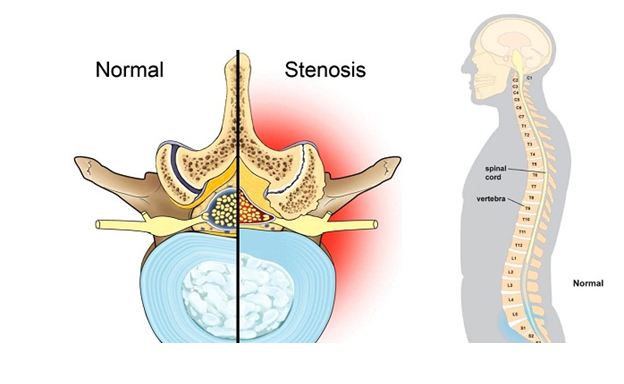What is Spinal Stenosis?
What is Spinal Stenosis?
Spinal stenosis is a thinning of the canal of spinal cord in the lumbar area (lower back). This usually occurs when bone or tissue, or both, grows in the openings in the bones of the spine. This growth can compress and irritate nerves leaving the spinal cord. The result can be neck pain, numbness, or weakness, most often in the legs, feet, lower back, and buttocks.

Important Data About Spinal Stenosis
- Spinal stenosis is usually the result of osteoarthritis, which can cause pinching of the spinal cord or nerve roots. Anyone over 50 is vulnerable.
- The medical history is essential to make a diagnosis. The effect of this disease varies greatly from one patient to another.
- There is no cure for this condition, but there are steps you can take to reduce pain and improve your flexibility (your ability to bend over and move).
- Exercise is of great importance in the treatment of spinal stenosis. Exercising regularly to keep muscles strong and improve flexibility increases strength, decreases pain, and improves general well-being.
- The selection of treatment depends on how severely the spinal stenosis affects your quality of life.

Effect of Spinal stenosis
The narrowing is usually caused by osteoarthritis (or “wear and tear” arthritis) of the spine and the discs between the vertebrae (the bones of the back). The cause can also be a thickening of the ligaments in the back, as well as a bulge in the discs that separate the vertebrae. Generally, the symptoms of spinal stenosis start slowly and get worse over time. Leg pain can be so severe that even walking short distances is intolerable. Often times, patients must sit or lean forward over a grocery cart, tabletop, or walker to temporarily relieve pain.







